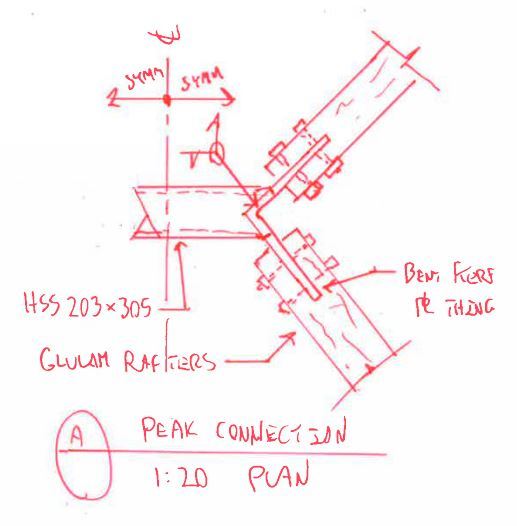Tinguindin
Structural
- Oct 15, 2008
- 24
Hello Guys;
I am currently working on a patio cover, please see the attached sketch. The architect wants me to remove two interior beams where the king posts are landing. I have seen several hip roofs without interior supports, but I just don't get how they are working. It seems that the diaphragm is somehow holding the roof together, but how do I calc this out.

Any ideas, I will appreciate them.
Thank you.
I am currently working on a patio cover, please see the attached sketch. The architect wants me to remove two interior beams where the king posts are landing. I have seen several hip roofs without interior supports, but I just don't get how they are working. It seems that the diaphragm is somehow holding the roof together, but how do I calc this out.

Any ideas, I will appreciate them.
Thank you.

